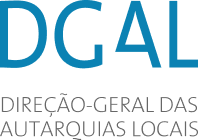On analysis indicators
Find out in detail all the reference benchmarks for consulting and analysing municipal transparency.
Regional and municipal transparency
Ensuring transparency in how Portugal's regions and municipalities operate and govern is one of the key cornerstones of local power. Public institutions are a major asset of the country's democratic system, which is why their full disclosure is paramount.
Bearing in mind this foundational principle, first and foremost it is critical to specify and identify all the indicators that can contribute towards transparency. Spanning a range of different thematic domains, these indicators are charged with pragmatically materialising all the key decisions that have an impact on the population.
5
Thematic areas of indicators
71
Different analysis indicators
Benchmarks
Entities at the service of Citizens
Local government administration is in itself a fairly complex structure. Apart from the bodies that work closely with citizens, such as the Municipalities and Parishes, a much wider array of organisations should be covered.
All these entities, each having their unique missions and purposes, fulfil a key role in providing services to the Citizen, either by responding directly to the population or by building short-, medium- and long-term strategies.
308
Total number of municipalities
3092
Total number of parishes
23
Metropolitan Areas and Intermunicipal Communities
5
Regional development commissions
